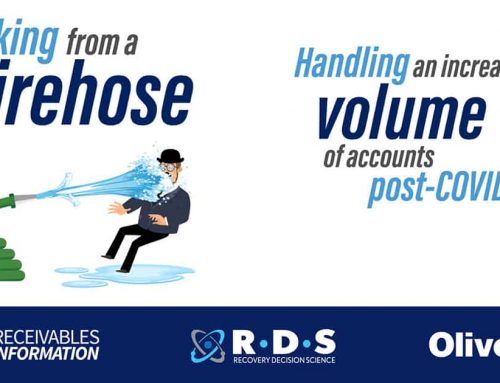As published in DBA Magazine Spring 2016
Management theory is something that is taught in business schools, but never really learned until you have an opportunity to manage a team. Managing people is more of an art than science because of the necessary focus on human behavior. Applying the same expectations and compensation across the board is a receipt for disaster. Behavioral science draws from a variety of disciplines including, psychology and sociology to better explain the attitudes and choices people make, and to better understand what motivates people.
In the Accounts Receivable Management industry, keeping your employees motivated can be challenging. As managers our objective is to get all of the human resources to focus their efforts toward reaching organizational goals. The art of achieving this objective is never cut and dry. Different people throughout your organization have different motivations and getting everyone moving in the same direction can be frustrating, but it is necessary in order to achieve your organization’s success.

A Deeper Look at Employee Motivation
Understanding the motivations of your people can help you provide programs and incentives that meet the needs of the different types of people working in your office. In 1960, Douglas McGregor, a Professor of Psychology and Executive Director of the Industrial Relations Section of Massachusetts Institute of Technology (M.I.T.) developed a theory about management that divides the workforce based on individual motivational triggers. The theory explains that while one group of employees will work hard for their own self-satisfaction, another group will only work hard enough not to get fired. Understanding which of your employees fall into these two “X” and “Y” categories can help you apply the right motivational factors to the right people.
THEORY X (Authority)
Theory X is the way that businesses have been managed for centuries. From the classical school of management to the quantitative approach, you can see Theory X at work. Theory X makes the assumption that all employees are lazy and the only way to get them to accomplish organizational goals is to either offer a reward or threaten with a punishment. Theory X is an authoritarian view of management and reflects a dictatorship with authority passed through “line authority” and power exerted over subordinates resulting from the power given by their position. McGregor asserts in Theory X that people need to be controlled and their behavior modified to fit the needs of the organization, and without control by management, people would be passive, even resistant, to the company’s needs. McGregor noted that these types of employees, “in many instances (and particularly true at the hourly wage level), the way you collect your day’s wages is to stay employed. That’s all. If you can keep from being fired, you get your wages.”
THEORY Y (Fulfillment)
Theory Y is the stark opposite management theory and is based on commitment from employees. Under Theory Y, managers believe that their employees want to come to work and are looking for responsibility. Ideal employees align their personal goals with the organizational goals using their own self-fulfillment as the primary motivating factor. Theory Y employees include those that are entrepreneurial and have an inner drive to achieve their goals of self-fulfillment as defined in Maslow’s hierarchy of needs. As employees develop, their human capital increases and their self worth and economic productivity increases as well.
Maslow’s Hierarchy of Need
Abraham Maslow was a psychologist from the 1940’s who proposed that the motivations of human behavior can be explained based on the needs an individual is trying to satisfy. We start by satisfying our basic biological and physiological needs like air, food, shelter before moving on to safety needs like protection and stability. As employees develop and move up the hierarchy, their motivations are different. Think about the X and Y employees in your office, then ask yourself what motivates them. You will find that most of your Y employees have crossed above belongingness while your X employees may still be focused on more basic needs like paying the rent or car payment. Understanding what drives these employees allows you to get the most from each team member by playing to those factors that motivate each person and help you get the most from every individual.
According to Maslow, “Employees want to learn, grow, and reach their potential.” He understood that managers can use these X and Y categories to identify top performers and put them on the fast track to growth by delegating responsibility to these individuals and allowing them to achieve a higher need satisfaction of belongingness and esteem.
What is The Best Way to Manage?
Each style of management is relevant and appropriate, yet different situations and a balance of these styles is one of the most difficult obstacles a manager faces. Employees at each level of your company and even each individual is different and may require a different style of management to get the best work product out of them. Hourly employees are not motivated by the same factors as the CEO and although Theory Y may work better at higher levels of the company, it is important to identify X & Y employees at all levels of the company. A Theory Y employee at the lowest levels of your company can quickly become an essential member of your leadership team. On the other hand, motivation does not apply to all positions in an organization. Some jobs have no room for motivation and an authoritarian view of management is necessary to achieve work product results.
The bottom line is that both theories essentially lead in the same way. X & Y employees are all motivated by fulfilling their needs. The key is identifying which needs each employee is trying to fill and then supporting their efforts to achieve those personal goals in conjunction with the goals of the organization. If your employee falls into Theory Y, delegate to them and allow them to achieve their own self-fulfillment needs.
Identifying Employees as X or Y
Many managers look at all of their employees as Theory X until someone has proven themselves to be Theory Y. To identify these self-driven employees, look for those people around your company that are always the first to volunteer for new initiatives or are willing to take on new responsibly when the opportunity arises. Often these people can be picked out of a crowd by looking for those that are engaged in company meetings, understand the company’s objectives and are always willing to go that extra mile to help the organization achieve its goals.
It is important to remember that what motivates an employee today, may not be what motivates them tomorrow. Motivations change as an employee grows within your organization and as they achieve life goals and/or realizations. An employee that starts as a receptionist might originally be motivated by more basic needs of paying for essentials like rent. But as they grow and mature both personally and professionally, their motivations may change. If they are promoted and are receiving higher compensation, their motivations may shift from the safety needs to more advanced needs like self-actualization where they are more concerned with opportunities to grow and develop skills than just the monetary portion of their compensation.
Do Not Waste Time Treating an X Like a Y
Managers with a Theory Y personality have a tendency to believe that they can help to convert and X to a Y. This is a big pitfall for time wasting. Employee motivations are not something that you can control as a manager, but rather something that needs to be observed. As much as we would like to think that you can grow someone into a specific role, the individual must have the motivation for that growth or the manager is just wasting their time.
Good managers want to develop their people to help them grow professionally and personally. The risk we run in our efforts is that we have misidentified the motivations that drive an individual. While a Theory Y person has the self-driven motivation to take on new opportunities and succeed, a Theory X person given the same opportunity will waste your time.
Opportunity is defined as, “a set of circumstances that makes it possible to do something.” The word “guarantee” is not included and which often scares someone that is working just hard enough not to get fired. If you want to give your Theory X employees opportunity, it is best to approach it in small steps. Give them simple “responsibility” tasks, and watch to see if they do the bare minimum or if they, on their own, take that assignment to the next level.



